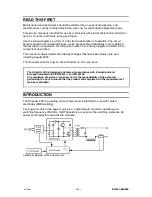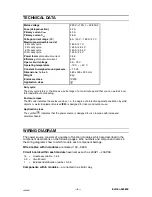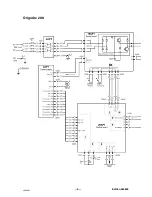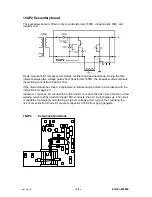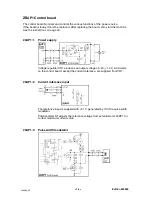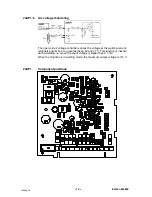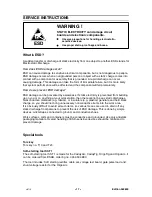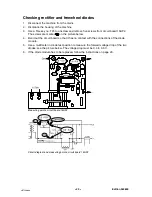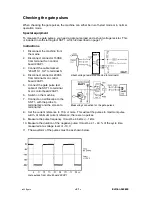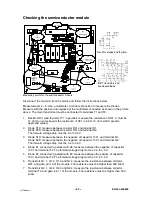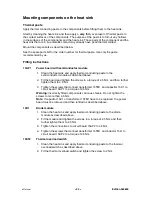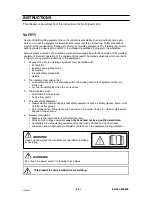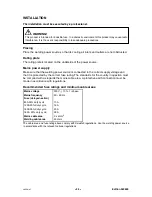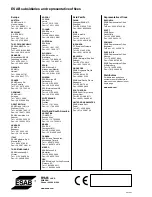
Edition 040830
-- 17 --
ct27f2
SERVICE INSTRUCTIONS
What is ESD?
A sudden transfer or discharge of static electricity from one object to another. ESD stands for
Electrostatic Discharge.
How does ESD damage occur?
ESD can cause damage to sensitive electrical components, but is not dangerous to people.
ESD damage occurs when an ungrounded person or object with a static charge comes into
contact with a component or assembly that is grounded. A rapid discharge can occur,
causing damage. This damage can take the form of immediate failure, but it is more likely
that system performance will be affected and the component will fail prematurely.
How do we prevent ESD damage?
ESD damage can be prevented by awareness. If static electricity is prevented from building
up on you or on anything at your work station, then there cannot be any static discharges.
Nonconductive materials (e.g. fabrics), or insulators (e.g. plastics) generate and hold static
charge, so you should not bring unnecessary nonconductive items into the work area.
It is obviously difficult to avoid all such items, so various means are used to drain off any
static discharge from persons to prevent the risk of ESD damage. This is done by simple
devices: wrist straps, connected to ground, and conductive shoes.
Work surfaces, carts and containers must be conductive and grounded. Use only antistatic
packaging materials. Overall, handling of ESD--sensitive devices should be minimized to
prevent damage.
WARNING !
STATIC ELECTRICITY can damage circuit
boards and electronic components.
S
Observe precautions for handling electrostatic--
sensitive devices.
S
Use proper static--proof bags and boxes.
ESD
Special tools
Torx key
Torx key no. T10 and T25
Soft--starting tool SST 1
The soft--starting tool SST 1 is made for the CaddyArc, CaddyTig, OrigoTig and OrigoArc. It
can be ordered from ESAB, ordering no. 0459 534 880.
The tool includes: Soft starting rectifier, cable set, voltage test board, gate pulse load and
shunt voltage resistor for the OrigoArc.

